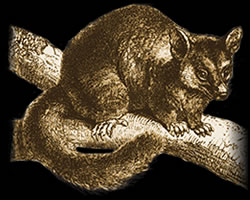Possum Yarn
Since its introduction to New Zealand by fur traders in the late 19th century, the non-native brushtail possum population has reached staggering proportions largely due to the lack of natural predators that would otherwise maintain an ecological balance. The consequences of their rapidly increasing numbers are many, including damaging impacts on New Zealand's native flora and fauna.

EVOLUTION OF OUR POSSUM FIBRE
1992
A collaboration between a farmer and a woman in Wanganui, New Zealand led to groundbreaking research on the brushtail possum fibre.
Fazil Khan developed the process for blending and spinning possum fibre.
Woolyarns Limited spun the first yarn made from brushtail possum fibre. Find out more about the possum wool manufacturing process.
1999
Woolyarns produced commercial yarns for the `Possum Down` knitwear brand.
Possum Down utilised two ton of possum fibre in their knitwear.
2000
Woolyarns offered a variety of luxury brushtail possum blended yarns to several local knitwear manufacturers and brands.
Growth rate of blended brushtail possum yarns increased an average of 10% year on year.
2007
Luxury European brand Hermes-Paris produced a Woman’s ready to wear collection using Perino Brushtail possum blended yarn from Woolyarns. This marked the initial sale by leading luxury fashion house brands.
2012
Woolyarns now use 40 to 50 ton of possum fibre annually, or the fibre from over 1 million possums.
FIBRE ATTRIBUTES
High performing. Lightweight insulation. The hollow structure of possum fibres means they can trap more air. Because air is a poor conductor of heat, the more air trapped within a fibre and the fibre structure, the more warmth it will retain for the wearer.
In independent tests, possum fibres were found to be 55% warmer than merino and 35% warmer than cashmere fabrics of the same weight and knit structure.
Low pilling. Fabrics containing possum fibre are less inclined to pill.
Breathable fabric. Possum fibres have a complex structure made up of a water holding interior, known as the cortex, and a water repelling exterior known as the cuticle. Sweat takes longer to condense into liquid, keeping the wearer more comfortable. At the same time the fibres are naturally shower repellent on the outside.
Soft to touch. The combination of the fibre scale structure and the unique finishing process required for fabrics containing possum fibre gives it a soft, light touch.